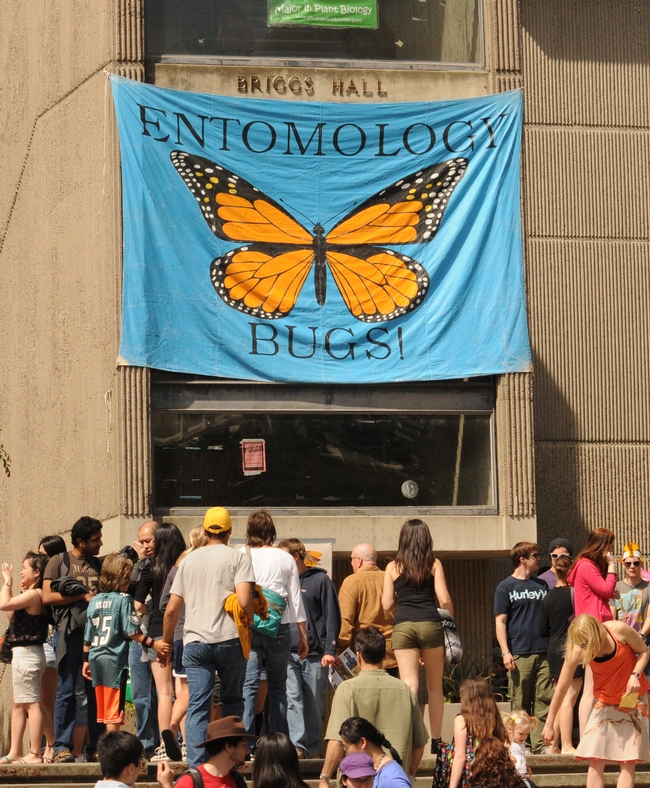- Author: Kathy Keatley Garvey

He made a difference: a huge difference.
Dr. Casida, 88, a world-renowned entomologist and toxicologist at UC Berkeley who died June 30 of a heart attack in his home, was a global authority on how pesticides work and their effect on humans.
A distinguished professor emeritus of environmental science, policy and management and of nutritional sciences and toxicology, Dr. Casida was the founding director of the campus's Environmental Chemistry and Toxicology Laboratory.
When awarded the Wolf Prize in Agriculture in 1993, the Wolf Foundation lauded his “research on the mode of action of insecticides as a basis for the evaluation of the risks and benefits of pesticides and toxicants, essential to the development of safer, more effective pesticides for agricultural use." according to a UC Berkeley News Service story. "His discoveries span much of the history of organic pesticides and account for several of the fundamental breakthroughs in the fields of entomology, neurobiology, toxicology and biochemistry.”
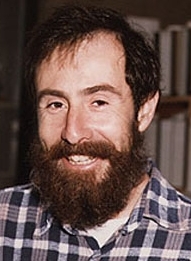
“John probably had a greater impact on his field of pesticide toxicology than any scientist of his generation,” said Hammock, founding director (1987-present) of the UC Davis NIEHS (National Institute of Environmental Health Sciences) Superfund Research Program and 25-year director of the UC Davis NIH/NIEHS Combined Analytical Laboratory. “His laboratory at Berkeley provided me with the most exciting years of my scientific career. In his own work, John moved from strength to strength creating numerous entire fields along the way. His scientific insight and drive were a constant stimulation to drive for innovation and excellence. Whenever I had an opportunity, I encouraged others to join his team. John was an inspiration and role model, not only because John came in early and stayed late, but also because he did science for the fun of discovery and taught for the joy of teaching.”
“John continued his high productivity until his death with major reviews on pesticides in 2016, 2017, and 2018 in addition to numerous primary papers,” Hammock noted. “He was working on primary publications as well as revising his toxicology course for the fall semester at the time of his death. Pesticide science was the theme of his career, and we live in a world with far safer and more effective pest control agents because of his effort.”
Professor John Casida opened multiple new fields ranging from fundamental cell biology through pharmaceutical discovery. "He pioneered new technologies throughout his career, from being one of the first to use radioactive compounds for pesticide metabolism through studies with accelerator mass spectrometry, photoaffinity labeling and others," Hammock related. "Yet the greatest impact of his career probably lives on in the numerous scientists he trained, now carrying on his traditions of excellence in science. These scientists are around the world in governmental, industrial and academic careers.”
Sarjeet Gill, Distinguished Professor, UC Riverside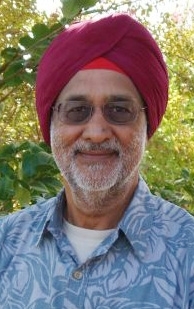
"This project also allowed me to build a long lasting friendship with Bruce Hammock who also was on the same project. Since John was always very focused, I often challenged John's patience with my practical jokes. I am sure he knew who the culprit(s) were but he never revealed he knew.
“The research experiences in John's lab made an indelible impression on me that drove me to return to the United States from Malaysia for an academic career in the UC system. Personally, I have lost an incredible mentor, and the scientific community lost the most preeminent pesticide toxicologist in the last two centuries. John changed the way we investigated mechanisms of toxicity at all levels. I certainly will miss him dearly.
Bruce Hammock, Distinguished Professor, UC Davis 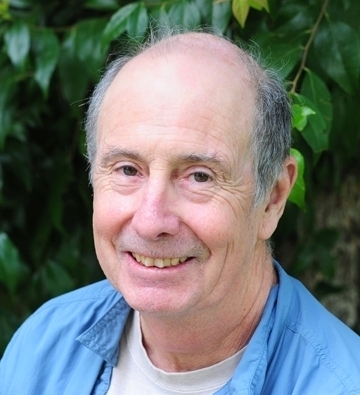
"After telling him I was there to be his graduate student, he replied he had no money for students. My retort was that I had a fellowship. He then told me that students were not space effective, and I promised not to take up much space. He continued that students were not time effective, and I promised not to take his time. In retrospect, Sarjeet must have really soured him on graduate students a few hours earlier."
"Months later, Sarjeet and I were sharing a desk-lab bench in the windowless closet next to the 'fly room' when Dr. Casida walked in. He had noted we both listed him as our major professor and asked if there was anything, he could do to encourage us to leave. When in unison we replied 'No!,' he politely left without accepting us, but soon we both had a desk and bench.
"So a few paces after Sarjeet, I initiated the most thrilling four years of my life. John's introduction to experimental science was marvelous with the perfect balance of inspiration, instruction and tremendous freedom. I was privileged to learn from a wonderful group of individuals and, of course, I made my most enduring of friendships with Sarjeet Gill. In addition to science, John taught a life-family-science balance by example. John was my life long mentor in science and in life but also evolved as a colleague and friend.
"Three more delightful years passed and John then took me to lunch at the faculty club. As I was about to leave the laboratory for the U.S. Army, he gave me sagely advice such as he had had it easy during the Sputnik period and I would have it hard. Then he went on to tell me than most people in the laboratory did not find my practical jokes nearly as funny as I did. I did not reveal that Sarjeet had both planned and executed most of them. Thus, Sarjeet succeeded in disrupting my Berkeley career from beginning until the end.
"John and his laboratory at Berkeley provided me with the most exciting years of my scientific career. In his own work, John moved from strength to strength creating numerous entire fields along the way. His scientific insight and drive were a constant stimulation to drive for innovation and excellence. Whenever I had an opportunity, I encouraged others to join his team. John was an inspiration and role model, not only because John came in early and stayed late, but also because he did science for the fun of discovery and taught for the joy of teaching."
Professor Casida is survived by his wife, artist and sculptor Kati Casida, sons Mark and Eric Casida, and two grandchildren.
(See more remembrances by UC Davis-affiliated scientists trained by Professor Casida on the UC Davis Department of Entomology and Nematology website)
Related Information:
- John Casida Obituary, UC Berkeley News Service
- For the Fun of Science: A Discussion with John E. Casida (Archives of Insect Biochemistry and Physiology)
- Still Curious: An Overview of John Casida's Contributions to Agrochemical Research (JAFC)
- Curious about Pesticide Action, by John E. Casida (JAFC)
(UC Berkeley New Service contributed to this post)
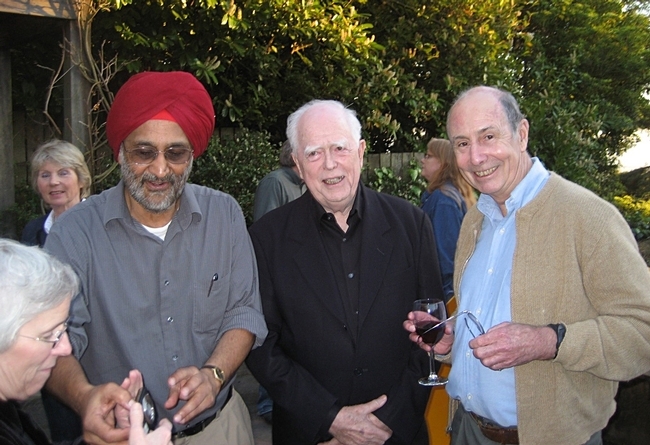
- Author: Kathy Keatley Garvey
Congratulations to the world's top 10 entomology departments, as listed today (April 3) in the long-awaited Times Higher Education's Center for World University Rankings.
The rankings show the University of Florida's Department of Entomology and Nematology as No. 1.
In California, the University of California, Riverside, is ranked No. 2, and UC Davis, No. 7. That's not a national statistic, but a global one. Kudos!
The list:
- University of Florida, 100 score
- University of California, Riverside, 95.23
- Cornell University, 91.95
- Kansas State University, 91.29
- North Carolina State University, 90.88
- Michigan State University, 90.74
- University of California, Davis, 89.88
- University of Georgia, 88.98
- Nanjing Agricultural University, China, 86.74
- University of São Paulo in Brazil, 86.74
The departments were scored in five peformance areas: Teaching (the learning environment); research (volume, income and reputation); citations (research influence); international outlook (staff students and research) and industry outcome (knowledge transfer). View the World University Rankings methodology here.
The UC Davis Department of Entomology and Nematology, based in Briggs Hall, is led by chair Steve Nadler and vice chair Joanna Chiu.
Interested in insect science? Be sure to visit the UC Davis Department of Entomology and Nematology's displays at the 103rd annual campuswide Picnic Day on Saturday, April 22. Last year thousands of visitors flocked to Briggs Hall; Bohart Museum of Entomology, home of nearly eight million insect specimens; and the Sciences Laboratory Building (nematology display). Here's what the department did last year. More information pending!
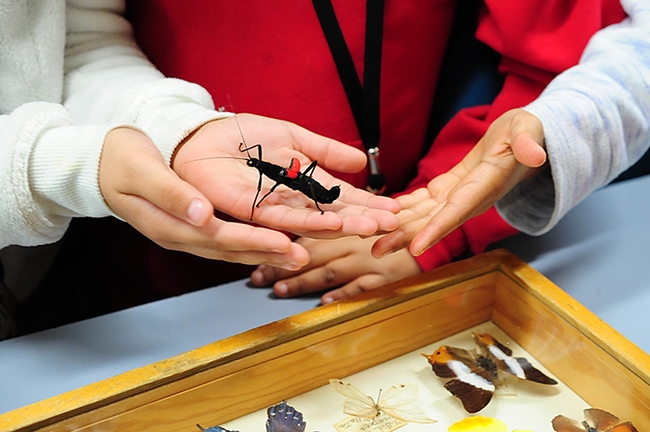
- Author: Kathy Keatley Garvey
Who knew?
UC Riverside entomologist Peter Graystock and colleagues Dave Goulson and William O. H. Hughes of the University of Sussex, United Kingdom, just published first-of-its-kind research in the Proceedings of the Royal Society B, that clearly shows the interaction of parasites between flowers and bees.
"Despite their beauty, flowers can pose a grave danger to bees by providing a platform of parasites to visiting bees, a team of researchers has determined," wrote UC Riverside senior public information officer Iqbal Pittalwala.
Graystock, a postdoctoral researcher in the UC Riverside Department of Entomology and lead author of the paper, was quoted in the news release: “Flowers are hotspots for parasite spread between and within pollinator populations. By showing that visits from parasite-carrying bees can turn flowers into parasite platforms, we can say that it is likely that heavily visited flowers may become more ‘dirty' with bee parasites. Planting more flowers would provide bees with more options, and parasite spread may thus be reduced.”
The researchers found four common honey bee and bumble bee parasites dispersed via flowers: Nosema apis (causes a honey bee disease), Nosema ceranae (causes an emergent disease in honey bees and bumble bees), Crithidia bombi (causes a bumble bee disease) and Apicystis bombi (mostly found in bumble bees). "These parasites are known to cause, lethargy, dysentery, colony collapse, and queen death in heavily infected bees," wrote Pittalwala.
The research, titled "Parasites in Bloom: Flowers Aid Dispersal and Transmission of Pollinator Parasites within and between Bee Species," was published Aug. 4 in the prestigious journal.
The abstract:
"The dispersal of parasites is critical for epidemiology, and the interspecific vectoring of parasites when species share resources may play an underappreciated role in parasite dispersal. One of the best examples of such a situation is the shared use of flowers by pollinators, but the importance of flowers and interspecific vectoring in the dispersal of pollinator parasites is poorly understood and frequently overlooked. Here, we use an experimental approach to show that during even short foraging periods of 3 hours, three bumblebee parasites and two honeybee parasites were dispersed effectively onto flowers by their hosts, and then vectored readily between flowers by non-host pollinator species. The results suggest that flowers are likely to be hotspots for the transmission of pollinator parasites and that considering potential vector, as well as host, species will be of general importance for understanding the distribution and transmission of parasites in the environment and between pollinators."
As Graystock pointed out in the news release: "With some 20,000 bee species, it is a surprise that only recently has research in pollinator health considered the interactions between bee species. Our finding may also affect the national and international trade of flowers unless sterilization of parasites on these flowers can be guaranteed. Otherwise, flower movements may also be moving pollinator parasites to new territories.”
We're looking forward to more of this research.

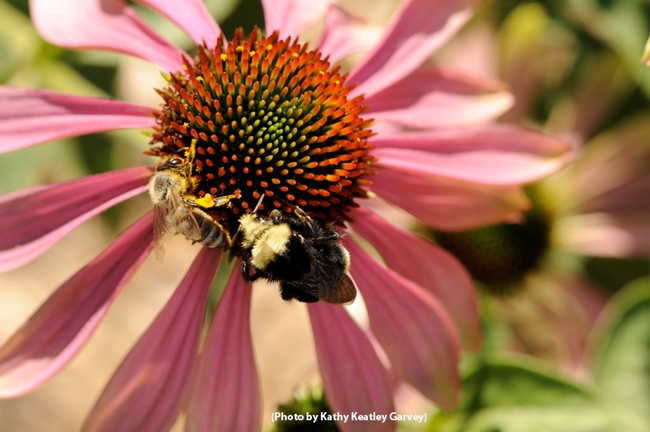
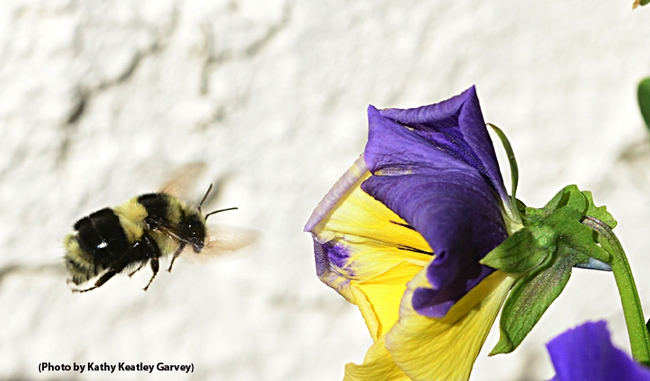
- Author: Kathy Keatley Garvey

Molecular neurobiologist Anupama Dahanukar, assistant professor at UC Riverside, will speak on "Taste Receptors and Feeding Preferences in Insects" at the UC Davis Department of Entomology seminar from 12:10 to 1 p.m. in Room 1022 of the Life Sciences Addition, corner of Hutchison and Kleiber Hall drives.
UC Davis assistant professor Joanna Chiu, who studies the molecular genetics of animal behavior, will host the seminar, which is scheduled to be recorded for later viewing on UCTV.
The seminar will focus on the common fruit fly, Drosophila melanogaster, exciting research under way in the Dahanukar lab.
"We are interested in the molecular neurobiology of feeding behavior," Dahanukar says. "Insects use highly diverse groups of gustatory receptors (Grs) to taste the chemical world and determine the palatability of potential food sources. In Drosophila melanogaster, the 68 receptors of this family are expressed in complex combinatorial patterns in taste neurons. In previous studies we and others identified a highly conserved clade of eight Gr genes that encode sugar receptors. Although some of these have been linked to detection of sweet compounds by genetic analysis, their precise functions are still poorly understood. Little is also known about how stimuli that are typically not rich in sugars trigger highly attractive gustatory responses in Drosophila."
"Using genetic and evolutionary analysis, we recently found that Gr64e, a receptor in this clade, plays an essential role in feeding preference for beer and other yeast fermentation products. We identified that Gr64e is necessary for neuronal and behavioral responses to an abundant component of yeast and fermentation products, glycerol. Moreover, Drosophila species that carry a polymorphism disrupting Gr64e function have reduced behavioral preference for beer, suggesting that Gr64e may contribute to specific evolutionary variations in appetitive selectivity. Ectopic expression of the Gr64e receptor in an olfactory neuron is sufficient to confer glycerol sensitivity. We have extended this ectopic expression system to identify that each sweet Gr protein serves as a determinant for recognition of unique but overlapping subsets of sweet tastants."
"We have also obtained functional expression of a taste receptor from the mosquito Anopheles gambiae in Drosophila. We are now poised to further investigate taste detection and Gr function in Drosophila and other insects."
A noted scientist, Dahanukar received a National Science Foundation Career Award in 2012; the Whitehall Foundation Award in 2011; and the 2000 Ruth L. Kirschstein National Research Service Award. She was awarded a Government of India National Merit Scholarship in 1990.
Dahanukar holds a bachelor of science degree in life sciences from Bombay University, India; a master's degree in environmental management from Duke University, Durham, N.C.; and a doctorate in genetics in 1999 from Duke University, where she studied patterning along the anterior-posterior axis in Drosophila embryos. In 1999, she joined the laboratory of John Carlson at Yale University to pursue post-doctoral training in the molecular neurobiology of insect chemosensory systems. Dahanukar joined the faculty of the UC Riverside Department of Entomology in 2009.

- Author: Kathy Keatley Garvey
Okay, what are the answers?
In a prior blog, we listed several questions asked at the Linnaean Games, a college-bowl type of quiz that’s a traditional part of the Entomological Society of America’s annual meeting. You have to know insect facts and figures and ESA history to win.It's a fun game that draws entomologists and would-be entomologists from throughout the world. Professor Tom Turpin of Purdue, decked out in a tuxedo and a monarch butterfly bowtie, moderates the event and provides more humor than some of the late-night TV shows. This year's ESA meeting, the 56th annual, took place Nov. 16-19 in Reno.
Ready for the questions and answers?Question: U.S. states have an official state insect. List three states that do not have one.
Answer: Hawaii, Indiana, Iowa, Michigan, Nevada, North Dakota, Rhode Island, and Wyoming. Source: See http://www.statesymbolsusa.org/Lists/state_insects.html
Question: What is the purpose of the process in folklore known as “Telling the Bees?”
Answer: To keep honey bees from leaving the hive when a bee keeper had died.
Question: Approximately how many beetle species have been described to date? Choices:
a. 50,000
b.100,000
c. 350,000
d. 500,000
e. 650,000
Answer: 350,000 (c)
Answer: Gil Grissom
Question: Imagine that you have wandered through an area where an egg mass of deer ticks has just hatched, and you find yourself in intimate association the dozens of tick larvae. What is your risk of getting Lyme disease?Answer: None. This would be their first blood meal, and Lyme disease is not transovarially transmitted.
The University of California, Riverside team won the competition, edging North Carolina State University. The UC Riverside team included Jennifer Henke, Jason Mottern, Casey Butler and Rebeccah Waterworth.UC Davis, our home team (Go Aggies!), also competed. Hillary Thomas, Andrew Pederson, Dominic Reisig and Michael Branstetter gave it the ol' Aggie try but didn’t quite make the finals. Next year! Their coach, Larry Godfrey, was on a University of Kentucky championship team.
What year was that? "Are you trying to make me feel really old?" Godfrey quipped. "Well, it was 1983 at the second annual Linnaean Games (second annual in the North Central Branch of ESA where it started). It was a few years before the other branches started this competition and several years before they did it at the national meeting. Tom Turpin, who started this with another professor at Purdue (Rich Edwards) was my major professor for my M.S."(Godfrey received his undergraduate and graduate degrees at Purdue and his doctorate at the University of Kentucky.)
Ready for more questions?Question: Name three insects of the five that are athletic team mascots at universities in the United States.
Answer: Bees, Black Flies, Hornets, Wasps, Yellowjackets
Question: What well known American poet wrote a poem entitled “The Bird to the Bees” that began with the lines “There is obviously a complete lack of understanding between the bee/ And me?"
Answer: Ogden Nash
In future columns, we'll take a look at some of the other questions and answers.
Meanwhile, check out the Smithsonian Magazine article on the University of Maryland team at the Linnaean Games. The article mentions that the students crammed for the Linnaean Games by poring over "The Insects," written by UC Davis entomology professors Penny Gullan and Peter Cranston.




